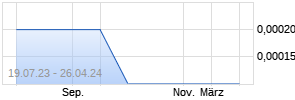
Entia Receives Canadian Patent Notice of Allowance for Use of Ergothioneine and its Genetic Transporter
PR Newswire
SHERWOOD, Ore., Dec. 17, 2012
SHERWOOD, Ore., Dec. 17, 2012 /PRNewswire/ -- Entia Biosciences (OTCBB: ERGO), a food science biotechnology company and emerging leader in the fields of Nutrigenomics and Targeted Nutrition, has received a Patent Notice of Allowance from the Canadian Intellectual Property Office covering the use of Ergothioneine and its genetic transporter (SLC22A4) in the treatment of a wide variety of diseases, including those affecting the immune and central nervous systems. Ergothioneine is a powerful amino acid and master antioxidant that is acquired exclusively from the diet and carried by this unique and specific transporter to cells throughout the body that are fighting damage and death from oxidative stress and toxic free radical reactions. Research conducted by Entia since 2011 has confirmed significant transporter activity in diabetes, arthritis, and several other serious non-communicable chronic conditions, suggesting an important physiologic role for Ergothioneine in diseases affecting millions of people world-wide.
"We are very pleased that our intellectual property estate on Ergothioneine is advancing nicely alongside the scientific, clinical and other business developments at Entia," said Marvin S. Hausman MD, Chairman and Chief Executive Officer. "The issuance of this important foundational patent significantly enhances the commercialization strategy for our ErgoD2™ line of proprietary medical foods, functional ingredients, and other nutritional supplementation solutions in 2013 and for the potential development of a commercial diagnostic test that could one day identify specific dietary deficiencies."
Found in naturally high concentrations almost exclusively in mushrooms and other fungi, Ergothioneine is transferred directly from these sources into the soil, where it is taken up by plants and grazing mammals. For thousands of years, our hunter/gatherer genetics have relied on this process to maintain adequate levels of Ergothioneine to prevent or delay the onset and progression of disease. Entia theorizes introduction of modern agricultural practices in the past century, such as the heavy use of chemical fertilizers, insecticides, and over tilling of the soil, has been gradually eradicating mushrooms from our farmland and depleting Ergothioneine from the food supply. During this same period, our dietary habits have been changing, which Entia believes is further accelerating deficiency in the general population and may explain the dramatic increases we are now seeing in diabetes, arthritis, neurodegenerative, and other debilitating diseases. This deficiency theory is supported by human blood testing conducted in the late 1920s1 that showed "normal" Ergo levels nearly double those found by Pennsylvania State University in 20102.
Discovered in 2005 by Dr. Dirk Grundemann at the University of Cologne (Germany), SLC22A4 is a sodium-ion dependent transporter that efficiently and specifically carries Ergothioneine across the cell membrane to erythrocytes (red blood cells), progenitor stem cells, and monocytes (white blood cells) (Grundemann, 2005). Variations in SLC22A4 have been associated with susceptibility to inflammatory disorders, such as rheumatoid arthritis and Crohn's disease, and expression has been documented in a variety of human tissues. Entia licensed the exclusive world-wide diagnostic and therapeutic rights to the discovery from the University of Cologne in 2010 and Dr. Grundemann currently serves on Entia's Scientific Advisory Board.
Dr. Solomon Snyder of Johns Hopkins University School of Medicine has suggested that Ergothioneine is as potent as glutathione and because of its dietary origin and the toxicity associated with its depletion, it may represent a new vitamin whose physiologic roles include antioxidant cytoprotection. Dr. Snyder further believes that the high density of Ergothioneine within mitochondria implies a unique role in protecting mitochondrial DNA from damage induced by free radicals and reactive oxygen species (Snyder, 2009). Mitochondria are cytoplasmic organelles responsible for life and death. Evidence from animal and clinical studies suggest that mitochondria play a critical role in aging, cancer, diabetes and neurodegenerative diseases such as Alzheimer's disease and Parkinson's disease (Simon, 2004; Lin, 2006; Reddy, P.H., 2009). Further supportive evidence of the potential protective role of Ergothioneine was recently shown by the presence of elevated levels in the red blood cells of pregnant women with the condition preeclampsia. There is currently no known cause for this condition, which affects nearly 10% of pregnancies reaching 20 weeks. The symptoms of preeclampsia include high blood pressure, protein in urine, and fluid retention and left untreated the condition can cause a range of problems such as growth restriction in babies and even fetal and maternal mortality. Ergothioneine is known as an antioxidant and antioxidants have been proposed to be helpful in reducing the risk of preeclampsia. It is therefore very interesting that we have found it to be in excess for women with the condition (Turner, E., 2009)."
About Entia Biosciences, Inc.
Entia is an authority on the clinical effects of oxidative stress and free radical reactions and is bringing this expertise to the fields of food science biotechnology and nutrigenomics. The Company identifies, scientifically validates, patents, and commercializes solutions that address multi-billion dollar markets for health, beauty and agriculture.
For more information, please visit our web sites at www.entiabio.com or contact:
Devin Andres
Vice President
Entia Biosciences, Inc.
13565 SW Tualatin-Sherwood Rd Sherwood, OR, 97140
Phone: 503-334-3575 Email: info@entiabio.com
Any statements contained in this press release that relate to future plans, events or performance are forward-looking statements that involve risks and uncertainties including, but not limited to, the risks associated with the transaction described in this press release, and other risks identified in the filings by Entia Biosciences with the Securities and Exchange Commission. Further information on risks faced by the Company and its shareholders are detailed in the Form 10-K for the year ended December 31, 2011 and in its subsequent Quarterly Reports on Form 10-Q. These filings are or will become available on a website maintained by the Securities and Exchange Commission at http://www.sec.gov. The information contained in this press release is accurate as of the date indicated. Actual results, events or performance may differ materially. Entia does not undertake any obligation to publicly release the result of any revision to these forward-looking statements that may be made to reflect events or circumstances after the date hereof or to reflect the occurrence of unanticipated events.
Bibliography:
Burmer, G. (2012). TNCS001A-1/SLC22A4. Entia Biosciences.
Grigat, S. e. (2007). Probing the Substrate Specificity of the Ergothioneine Transporter with Methimazole, Hercynine,and Organic Cations. Biochem. Pharmacol., 74, 309-316.
Grundemann, D. e. (2005). Discovery of the Ergothioneine Transporter. Proc. Natl. Acad. Science (PNAS), 102(14), 5256-5261.
Lin, M. &. (2006). Mitochondrial Dysfunction and Oxidative Stress in Neurodegenerative Diseases. Nature, 443, 787=795.
Mydel, P. e. (2006). Roles of the Host Oxidative Immune Response and Bacterial Antioxidant Rubrerythrin During Porphyromonas gingivalis Infection. PloS. Pathog., 2(7), 71-76.
Paul, B. &. (2009). The Unusual Amino Acid L-Ergothioneine is a Physiologic Cytoprotectant. Cell Death & Differentiation, pp. 1-7.
Reddy, P. (2009). The Role of mitochondria in Neurodegenerative Siseases: Mitochondria as a Therapeutic Target in Alzheimer's Disease. CNS Spectr., 14(8), 8-18.
Simon, D. K. (2004). Somatic mitochondrial DNA Mutations in Cortex and Substantia nigra in Aging and Parkinson's Disease. Neurobiol. Aging, 25, 71-81.
Turner, E. e. (2009). Imidazole-Based Erythrocyte Markers of Oxidative Stree in Preeclampsia - An NMR Investigation. Reprod.Sciences, 16(11), 1040-1051.
West, A. e. (2011). TLR Signalling Augments Macrophage Bactericidal Activity Through Mitochondrial ROS. Nature, 472, 476-480.
1 Harold Bernard Salt, "The Ergothioneine Content of the Blood in Health and Disease," August 27, 1931.
2 Weigand-Heller et al, "The bioavailability of ergothioneine from mushrooms (Agaricus bisporus) and the acute effects on antioxidant capacity and biomarkers of inflammation." Preventive Medicine (2012),54:575-578.
SOURCE Entia Biosciences, Inc.

Mehr Nachrichten zur Entia Biosciences Aktie kostenlos abonnieren
(Mit der Bestellung akzeptierst du die Datenschutzhinweise)

Hinweis: ARIVA.DE veröffentlicht in dieser Rubrik Analysen, Kolumnen und Nachrichten aus verschiedenen Quellen. Die ARIVA.DE AG ist nicht verantwortlich für Inhalte, die erkennbar von Dritten in den „News“-Bereich dieser Webseite eingestellt worden sind, und macht sich diese nicht zu Eigen. Diese Inhalte sind insbesondere durch eine entsprechende „von“-Kennzeichnung unterhalb der Artikelüberschrift und/oder durch den Link „Um den vollständigen Artikel zu lesen, klicken Sie bitte hier.“ erkennbar; verantwortlich für diese Inhalte ist allein der genannte Dritte.



